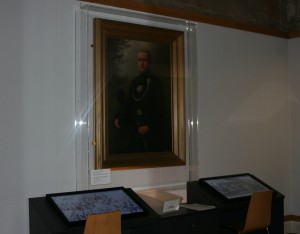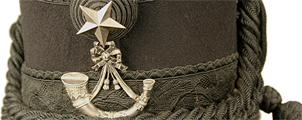Portrait of Douglas Graham Moncrieff-Wright.

From the earliest periods of history, examples of portraiture can be seen in wall paintings, carvings & sculptures.
Examples of renaissance paintings of religious figures, royals and the very rich show the portrait as a status symbol, not just a record of the sitter’s likeness. Portraits expressed power, indicating status and wealth. During the mid 19th Century mass production of paints and canvasses made portraiture much more accessible and it became fashionable to have portraits painted of family members on anniversaries or to celebrate successes or achievements.
This portrait of Douglas Graham Moncrieff-Wright, which hung in his family home, was painted by an unknown artist. It was likely to have been commissioned when Lieutenant Moncrieff-Wright was gazetted to The Cameronians (SR) following his graduation in 1913.
Douglas Graham Moncrieff-Wright was born on the 7th June 1893 in Rangoon, Burma. He was educated at Glenalmond College, Perth before joining the Royal Military Academy, Sandhurst. At the outbreak of war he was deployed with 1st Battalion to France. During the 1st Battalion’s attack on the Hindenburg trenches and despite being wounded by grenade, he remained at duty. By the end of the war he had been awarded the Military Cross and bar, and been mentioned in despatches on two separate occasions.
Following a long and distinguished career, Lieutenant Colonel D. G. Moncrieff of Kinmonth died on 1st May 1983, aged 89 years old.
We are grateful to have such a fine portrait within our collection and are pleased it can now be seen on display, above the touch-screens in The Cameronians (SR) area of Low Parks Museum.

Comments: 0


